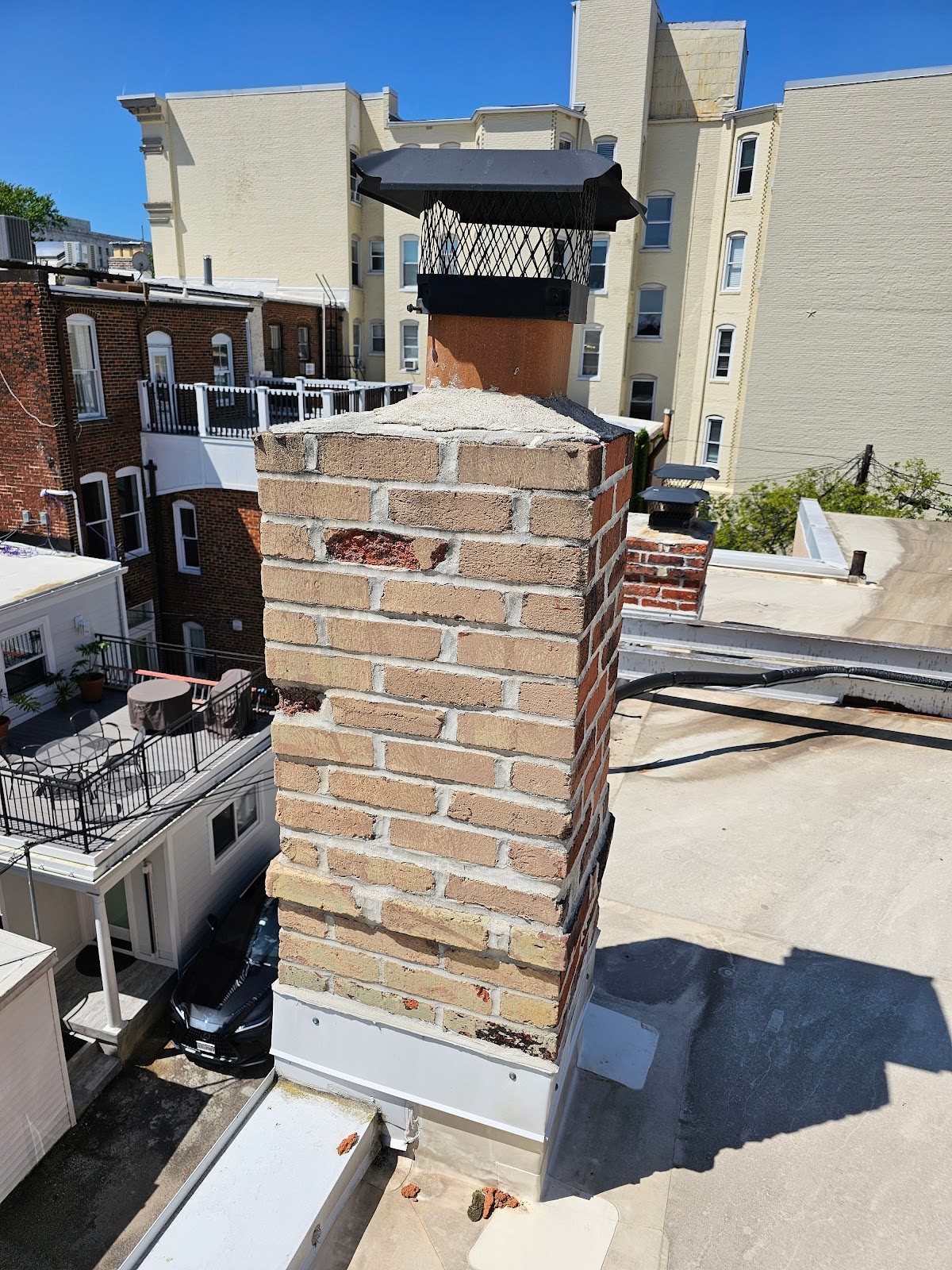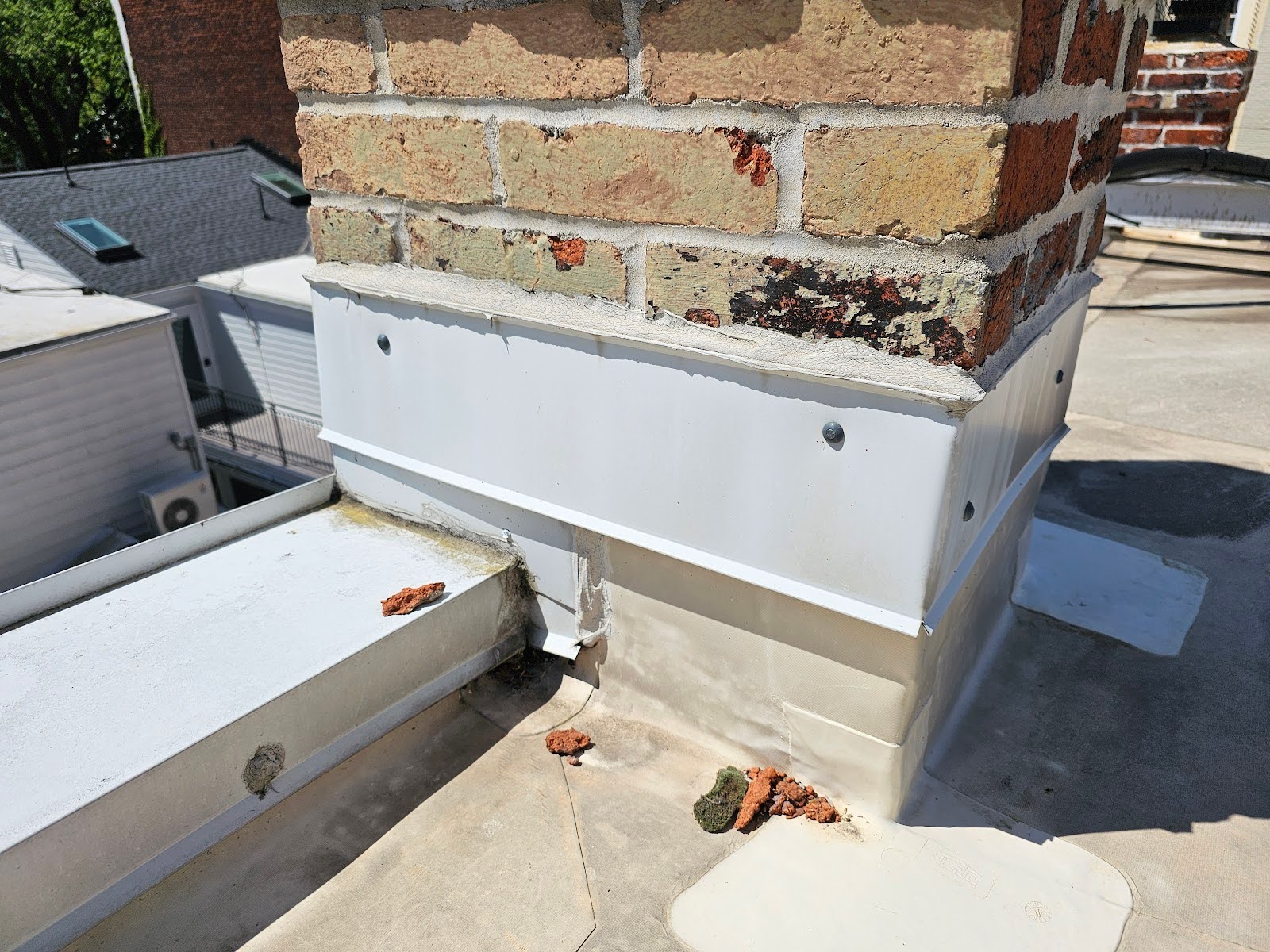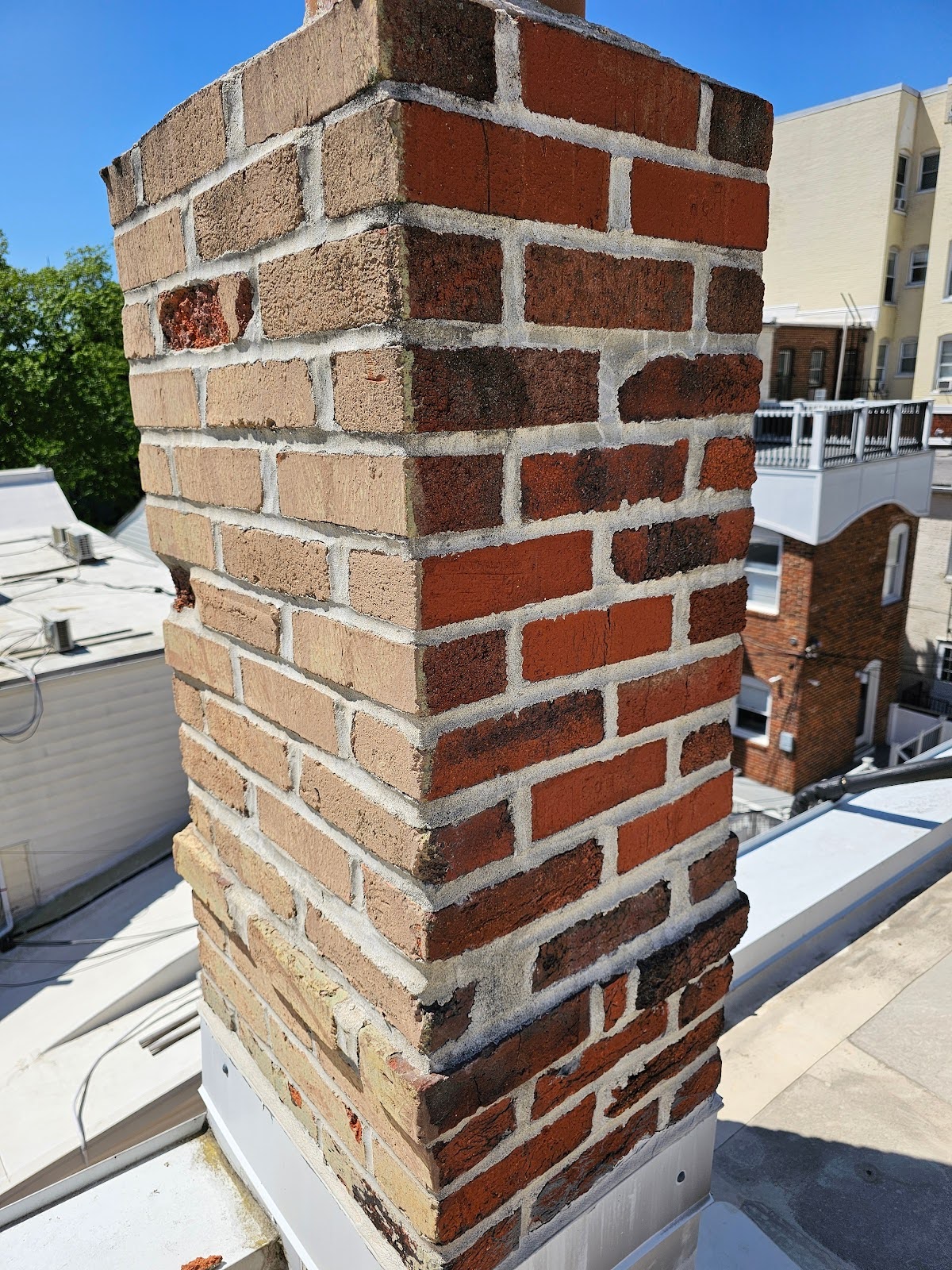Brick Chimneys: Strength and Style Above Rooftops
Normally, when we think about historic brick restoration, we think about the repointing of typical brick facade walls of a building. These brick facade walls, built in historic times are common throughout much of the historic neighborhoods here in Washington DC. Historic masonry buildings are important, in the realm of preservation, because they need to be maintained and properly restored. Historic brick buildings are generally beautiful, but it takes a different skill set and different materials to maintain and restore these buildings.
Today though, we’re taking a look at a few different brick chimneys which were built with materials similar to the facades themselves, but they are built in areas that people often forget about. Generally these brick chimney tops are on top of the roofs of the buildings and are in harder to access locations. You can’t always just reach them from the ground and sometimes you need to set up a restoration operation on the rooftop itself in order to work on and restore these historic chimneys.
One of the most laborious parts of brick restoration is repointing. Repointing, also often referred to as tuckpointing, is a process in which the outer areas of the brick mortar are selectively removed from the wall and replaced with the brick remaining in place during the restoration.
This work isn’t clean or easy, it generally requires and or creates a lot of dirt and dust and is hard and heavy work. Often scaffolding and/or complicated ladders will be used access the upper parts of the facade of the building. In the case of the restoration and or repointing of chimney tops, the work is often instead done from the rooftop itself. In those cases, the membrane of the roof, which essentially creates the waterproof barrier, must be protected.
The picture below shows a historic brick building here in Washington, DC. The building, overall, has been well maintained and is in generally good condition, but the chimney has been extended and or rebuilt with a mid-century type of brick work. The brickwork has spaled at a handful of locations.

In the next picture below, you can see the same chimney, but from a slightly different angle focused more on the base of the chimney where the chimney penetrates through the roof system. The roof system itself, in this case is built to wrap around the chimney, but the chimney sticks out for other into the field of the roof then the remainder of the exterior brick masonry wall at the perimeter of the building. In other words, that brick chimney is built inside of the exterior facade and basically joins the exterior facade in a flush continuous planar layout.
The counter flashing at the base of the chimney, shown closely in this photo, is set into the masonry, but it’s actually part of the roof system. This is one of the several different points of layout and context where the roof and masonry must be joined together properly. In this particular case, the counterflashing uses an outward bend in the top of the counterflashing where it meets against the masonry.
This reservoir is filled with a sealant. It’s not at the same as using a regular or a raggle though and it may not perform as well. The building code specifically requires a reglet or raggle and there may be exceptions which permit this alternative, but the traditional methodology is to install the counter flashing into a custom cut raggle.

At the other side of this chimney you can see that it’s actually a kiln fired clay brick, but the side that we looked at first is has been painted in the past. It looks more like the actual brick color there because the mortat that runs between those painted brick facings was applied after the remainder of the brick was painted.

Our company, Dupont Tuckpointing and Masonry, specializes in masonry restoration, historic brick repointing, and tuckpointing services in the Washington D.C. area. These buildings are uniquely historic, and their preservation requires skilled masons who are technically trained in the best practices and knowledge of proper restoration techniques.
We understand the significance of maintaining the architectural integrity of these historic structures, and our team of experienced professionals is dedicated to delivering exceptional craftsmanship. Whether you require masonry restoration, tuckpointing, or brick repointing services, we are here to help.
At Dupont Tuckpointing and Masonry, we take pride in our work and strive to ensure that every project is executed with the utmost care and attention to detail. We are committed to preserving the rich heritage of Washington D.C.’s built environment for generations to come.
If you have any questions or needs regarding masonry restoration, historic brick repointing, or tuckpointing services, please do not hesitate to reach out to us. We would be delighted to assist you and provide you with the expertise and quality workmanship that your historic property deserves.
You can reach us by telephone at (202) 796-7644 and you can reach us by email from the contact form on our website at https://duponttuckpointingmasonrydc.com/contact-us/.




